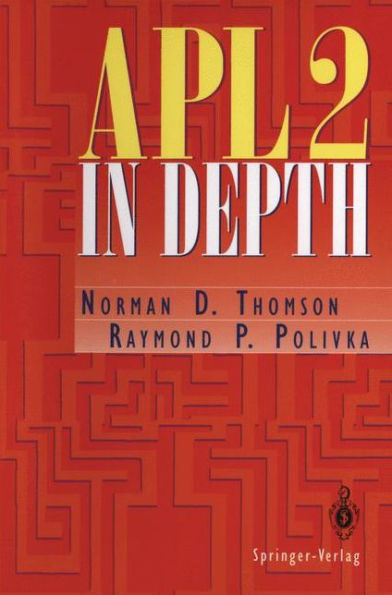APL2 in Depth
This book is designed for people with a working knowledge of APL who would like to increase their fluency in the wide range of extra facilities offered by second-generation APL products. Although the primary product in view is IBM's APL2 as implemented on mainframe, PC and RS/6000, the language fea tures covered share considerable common ground with APL *PLUS II and Oyalog APL. This is a book about skills rather than knowledge, and an acquaintance with some variety of APL on the reader's part is assumed from the start. It is designed to be read as a continuous text, interspersed with exer cises designed to give progressively deeper insight into what the authors conceive as the features which have the greatest impact on programming techniques. It would also be suitable as a text-book for a second course in APL2, although experience suggests that most programming language learning is now by self study, so that this volume is more likely to provide follow-up reading to more elementary texts such as "APL2 at a Glance" by Brown, Pakin and Polivka. Material is discussed more informally than in a language manual - in this book textual bulk is in proportion to difficulty and importance rather than to the extent of technical details. Indeed, some APL2 extensions are not covered at all where the technicalities pose no great problems in understanding and can be readily assimilated from the language manuals.
1101516154
APL2 in Depth
This book is designed for people with a working knowledge of APL who would like to increase their fluency in the wide range of extra facilities offered by second-generation APL products. Although the primary product in view is IBM's APL2 as implemented on mainframe, PC and RS/6000, the language fea tures covered share considerable common ground with APL *PLUS II and Oyalog APL. This is a book about skills rather than knowledge, and an acquaintance with some variety of APL on the reader's part is assumed from the start. It is designed to be read as a continuous text, interspersed with exer cises designed to give progressively deeper insight into what the authors conceive as the features which have the greatest impact on programming techniques. It would also be suitable as a text-book for a second course in APL2, although experience suggests that most programming language learning is now by self study, so that this volume is more likely to provide follow-up reading to more elementary texts such as "APL2 at a Glance" by Brown, Pakin and Polivka. Material is discussed more informally than in a language manual - in this book textual bulk is in proportion to difficulty and importance rather than to the extent of technical details. Indeed, some APL2 extensions are not covered at all where the technicalities pose no great problems in understanding and can be readily assimilated from the language manuals.
54.99
In Stock
5
1

APL2 in Depth
264
APL2 in Depth
264Paperback(Softcover reprint of the original 1st ed. 1995)
$54.99
54.99
In Stock

Product Details
| ISBN-13: | 9780387942131 |
|---|---|
| Publisher: | Springer New York |
| Publication date: | 06/13/1995 |
| Edition description: | Softcover reprint of the original 1st ed. 1995 |
| Pages: | 264 |
| Product dimensions: | 6.10(w) x 9.25(h) x 0.02(d) |
From the B&N Reads Blog
